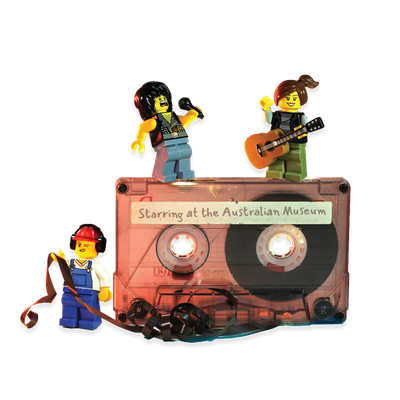Your search returned 2814 results
By Page Type
By Tag
- fish (966)
- blog (698)
- fishes of sydney harbour (400)
- First Nations (293)
- Blog (236)
- AMRI (169)
- archives (165)
- Aboriginal and Torres Strait Islander (135)
- Eureka Prizes (131)
- insect (126)
- Ichthyology (125)
- geoscience (109)
- minerals (102)
- climate change (98)
- podcast (94)
- Fish (91)
- Anthropology (89)
- International collections (80)
- Minerals Gallery (78)
- wildlife of sydney (78)
- Labridae (77)
- frog (73)
- gemstone (70)
- history (63)
- photography (63)
- staff (61)
- Mollusca (60)
- gem (59)
- Birds (58)
- education (57)
- Gems (56)
- Indonesia (56)
- AMplify (54)
- shark (54)
- people (53)
- exhibition (52)
- earth sciences (50)
- past exhibitions (50)
- Gobiidae (48)
- Pomacentridae (45)
- sustainability (45)
- Serranidae (44)
- science (43)
- lifelong learning (42)
- Earth and Environmental Science (41)
- Syngnathidae (41)
- Ancient Egypt (40)
- Bali (40)
- bird (40)
- dangerous australians (40)
-
Maitland Bar Gold Nugget
https://australian.museum/learn/minerals/mineral-factsheets/maitland-bar-gold-nugget/The Maitland Bar gold nugget has a value far beyond its gold content.
-
Calcite Crystals
https://australian.museum/learn/minerals/mineral-factsheets/calcite-crystals/This attractive and impressive group of large and transparent scalenohedral or ‘dog-tooth’ calcite crystals is from a pool in Cliefden Caves.
-
Gold on Quartz
https://australian.museum/learn/minerals/mineral-factsheets/gold-on-quartz/Gold always has instant appeal, and this photogenic specimen certainly attracts attention.
-
Opal ‘Pineapple’
https://australian.museum/learn/minerals/mineral-factsheets/opal-pineapple/This opal ‘pineapple’ has nothing to do with the fruit – the term is only a visual description. The opal is made of silicon dioxide with water.
-
Azurite with Cerussite
https://australian.museum/learn/minerals/mineral-factsheets/azurite-with-cerussite/This magnificent plate of dark blue azurite (copper hydroxy-carbonate) crystals from the oxidised zone of the Broken Hill orebody was acquired by Albert Chapman from a Broken Hill mine ‘trucker’ who ‘collected’ it in the 1950s.
-
Heulandite
https://australian.museum/learn/minerals/mineral-factsheets/Heulandite/This is an attractive group of lustrous, orange, diamond-shaped crystals arranged in radiating sheaves.
-
Smithsonite on Coronadite Stalactite
https://australian.museum/learn/minerals/mineral-factsheets/smithsonite/These small, sugary, white smithsonite crystals are encrusting branching stalactites of coronadite (lead, manganese oxide).
-
‘Welcome’ Gold Nugget Replica
https://australian.museum/learn/minerals/mineral-factsheets/welcome-gold-nugget-replica/The Australian Museum has a set of 43 gold nugget replicas, some acquired up to 135 years ago, representing every Australian state except South Australia, as well as New Zealand.
-
Alabandite with Calcite
https://australian.museum/learn/minerals/mineral-factsheets/alabandite-with-calcite/Alabandite is a rare manganese sulphide mineral found in only a few locations in the world, but Broken Hill has produced some of the best and largest examples.
-
Chalcopyrite on quartz
https://australian.museum/learn/minerals/mineral-factsheets/chalcopyrite-on-quartz/These large, golden tetrahedral chalcopyrite (copper iron sulphide) crystals on quartz matrix were purchased in the mid-1960s by Albert Chapman from John Cerlienco of South Australia.
-
Find out more
Tails from the Coasts
Special exhibition
On now![]()
-
Find out more
Burra
Permanent kids learning space
10am - 4.30pm![]()
-
Discover more
RELICS
Special Exhibition
Opens 16 August 2025![]()
-
Discover more
Minerals
Permanent exhibition
Open daily![]()





